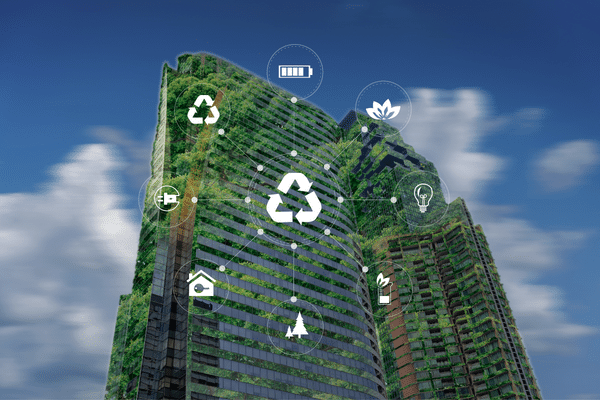
Sustainable IT, also known as Green IT, aims to minimize the negative impact on the environment in all areas of IT operations, including the design, manufacturing, operation and disposal of technology, computers and other computer-related products. It is the practice of environmental sustainability in the IT industry.
In the IT industry and offices worldwide, desktops, laptops and servers rely on electricity. Various equipment must either be charged or plugged in at all times. Computers and servers generate heat, which requires additional energy to cool the equipment.
Across the world, many IT departments have green IT initiatives to reduce the environmental impact of their operations. But still, sustainability in the IT industry needs improvement and here are various approaches to minimize the adverse effects on the environment.
Why sustainable IT matters
Green IT initiatives include reducing the use of hazardous materials and maximizing energy efficiency during a computer lifespan. Other aspects of sustainable IT encompass redesigning data centres and promoting virtualization, green networking and cloud computing.
During the COVID-pandemic, technology enabled people to work from home, eliminating commuting and lowering exhaust emissions. The Internet of Things (IoT) and efficient intelligent technology are helping reduce the carbon footprint of previous generations.
Organizations must consider sustainability by making decisions based on the ethics and responsibility of their business, from their ecological footprint to their global business practices. Then there are business costs: the energy that runs all of a company’s IT infrastructure alone is a significant part of overall expenses.
Despite relying on technology, organizations not in the tech sector tend to be more wasteful. That’s because non-tech firms may be less aware of the sustainability that more innovative, cutting-edge tech can offer.
Importantly, promoting your organization for its sustainable efforts may not result in cheaper business processes, but doing the right thing is increasingly important to customers – so promoting green IT practices can improve your brand’s image.
How to promote sustainable IT in the workplace
Organizations seeking to embrace sustainability in its various forms can pursue several different strategies in doing so. Below are a few sustainable business practices you may consider following and promoting.
- Relocate servers: Maximize your data center space as much as possible to minimize your cooling and energy costs. If possible, relocate your servers to colder climates for an 8% reduction in GHG emissions.
- Migrate to the cloud: The cloud is essential in helping organizations become more sustainable. A study from 451 research reveals that migrating to a cloud provider like AWS can help lower your IT carbon footprint by up to 88% when factoring in the carbon intensity of consumer electricity and renewable energy purchases, reducing associated carbon emissions.
- Using innovative IT: Older technology can require more power, and their large sizes often mean outsized heat output – requiring additional cooling. Modern innovative technology can increase productivity, efficiency and cost savings, reduce product waste, chemicals and resources and measure, analyze and track changes, all of which can help minimize the environmental impact.
- Utilizing energy-efficient rated technology: Companies like Energy Star audit and certify factories and devices for their efficiencies and sustainable practices.
How to promote sustainable IT in the home
Sustainable IT practices aren’t just for organizations to follow in the office. Employees can reduce their energy consumption with these practices.
- Set computers to sleep: Sleep is the lowest energy use besides powering off and unplugging your devices. Set monitors to turn off after 15 minutes of inactivity, and hard disks should be shut off even sooner. Your computer shouldn’t be awake after more than 30 minutes of inactivity.
- Upgrade to intelligent power strips: These smart strips reduce the energy consumed by computers, TVs and peripheral devices.
- Share printers: Whether at home or in the office, consider how often printers are necessary and who can share to reduce energy usage.
- Work remotely: Working from home is a great way to reduce GHG emissions associated with commuting. If working from home isn’t an option for you, think of alternative modes of transportation like biking, electric scooters and carpooling.
The higher education sector is a significant user of technology across campuses and can have a role in supporting sustainable technology. Integrating sustainability considerations into purchasing decisions not only helps solve these core challenges but also reduces the risk for your supply chain, builds brand value and has the potential to create operational and energy savings.

